Refine search
No keyword found to refine search
keywords EN
Places
Names
713 documents found
| 1 | 12 |
Documents per page :

Surf in the Almadies district of Dakar, Senegal on Friday February 21, 2025.
Nicolas Réméné / Le Pictorium
LePictorium_0303378.jpg
Surfers at the 'Secret Spot' site in the Almadies district of Dakar, Senegal, Friday February 21, 2025.
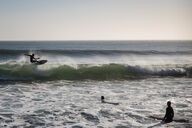
Surf in the Almadies district of Dakar, Senegal on Friday February 21, 2025.
Nicolas Réméné / Le Pictorium
LePictorium_0303379.jpg
Surfers at the 'Secret Spot' site in the Almadies district of Dakar, Senegal, Friday February 21, 2025.
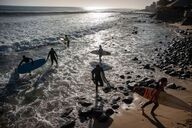
Surf in the Almadies district of Dakar, Senegal on Friday February 21, 2025.
Nicolas Réméné / Le Pictorium
LePictorium_0303380.jpg
Surfers at the 'Secret Spot' site in the Almadies district of Dakar, Senegal, Friday February 21, 2025.
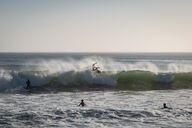
Surf in the Almadies district of Dakar, Senegal on Friday February 21, 2025.
Nicolas Réméné / Le Pictorium
LePictorium_0303381.jpg
Surfers at the 'Secret Spot' site in the Almadies district of Dakar, Senegal, Friday February 21, 2025.
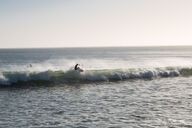
Surf in the Almadies district of Dakar, Senegal on Friday February 21, 2025.
Nicolas Réméné / Le Pictorium
LePictorium_0303382.jpg
Surfers at the 'Secret Spot' site in the Almadies district of Dakar, Senegal, Friday February 21, 2025.
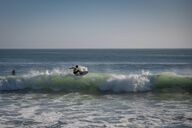
Surf in the Almadies district of Dakar, Senegal on Friday February 21, 2025.
Nicolas Réméné / Le Pictorium
LePictorium_0303383.jpg
Surfers at the 'Secret Spot' site in the Almadies district of Dakar, Senegal, Friday February 21, 2025.
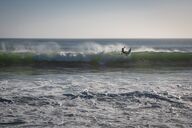
Surf in the Almadies district of Dakar, Senegal on Friday February 21, 2025.
Nicolas Réméné / Le Pictorium
LePictorium_0303384.jpg
Surfers at the 'Secret Spot' site in the Almadies district of Dakar, Senegal, Friday February 21, 2025.

Surf in the Almadies district of Dakar, Senegal on Friday February 21, 2025.
Nicolas Réméné / Le Pictorium
LePictorium_0303385.jpg
Surfers at the 'Secret Spot' site in the Almadies district of Dakar, Senegal, Friday February 21, 2025.

Surf in the Almadies district of Dakar, Senegal on Friday February 21, 2025.
Nicolas Réméné / Le Pictorium
LePictorium_0303386.jpg
Surfers at the 'Secret Spot' site in the Almadies district of Dakar, Senegal, Friday February 21, 2025.
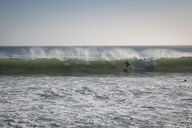
Surf in the Almadies district of Dakar, Senegal on Friday February 21, 2025.
Nicolas Réméné / Le Pictorium
LePictorium_0303387.jpg
Surfers at the 'Secret Spot' site in the Almadies district of Dakar, Senegal, Friday February 21, 2025.
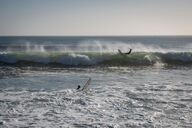
Surf in the Almadies district of Dakar, Senegal on Friday February 21, 2025.
Nicolas Réméné / Le Pictorium
LePictorium_0303388.jpg
Surfers at the 'Secret Spot' site in the Almadies district of Dakar, Senegal, Friday February 21, 2025.
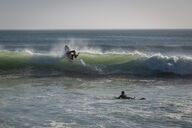
Surf in the Almadies district of Dakar, Senegal on Friday February 21, 2025.
Nicolas Réméné / Le Pictorium
LePictorium_0303389.jpg
Surfers at the 'Secret Spot' site in the Almadies district of Dakar, Senegal, Friday February 21, 2025.
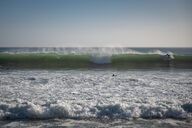
Surf in the Almadies district of Dakar, Senegal on Friday February 21, 2025.
Nicolas Réméné / Le Pictorium
LePictorium_0303390.jpg
Surfers at the 'Secret Spot' site in the Almadies district of Dakar, Senegal, Friday February 21, 2025.
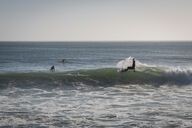
Surf in the Almadies district of Dakar, Senegal on Friday February 21, 2025.
Nicolas Réméné / Le Pictorium
LePictorium_0303391.jpg
Surfers at the 'Secret Spot' site in the Almadies district of Dakar, Senegal, Friday February 21, 2025.
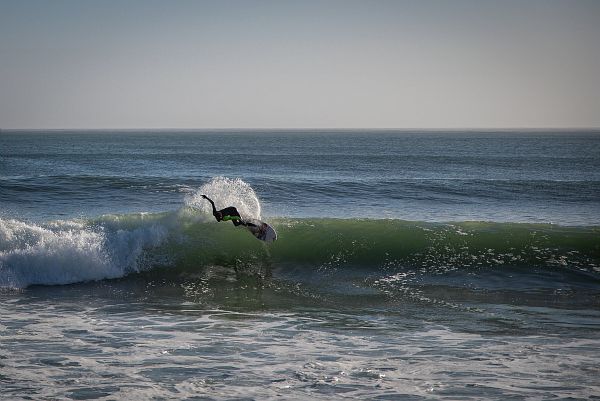
Surf in the Almadies district of Dakar, Senegal on Friday February 21, 2025.
Nicolas Réméné / Le Pictorium
LePictorium_0303392.jpg
Surfers at the 'Secret Spot' site in the Almadies district of Dakar, Senegal, Friday February 21, 2025.
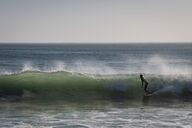
Surf in the Almadies district of Dakar, Senegal on Friday February 21, 2025.
Nicolas Réméné / Le Pictorium
LePictorium_0303393.jpg
Surfers at the 'Secret Spot' site in the Almadies district of Dakar, Senegal, Friday February 21, 2025.
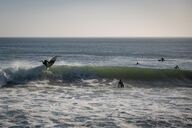
Surf in the Almadies district of Dakar, Senegal on Friday February 21, 2025.
Nicolas Réméné / Le Pictorium
LePictorium_0303394.jpg
Surfers at the 'Secret Spot' site in the Almadies district of Dakar, Senegal, Friday February 21, 2025.
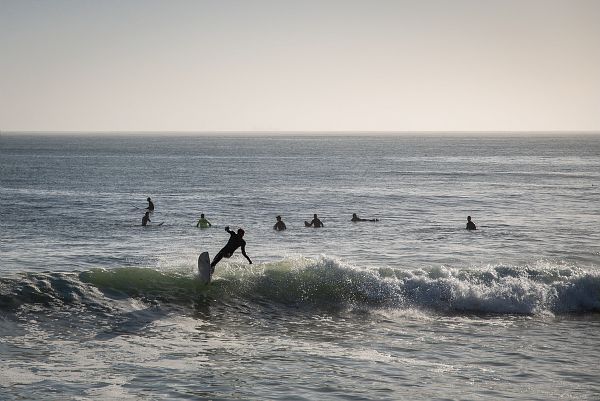
Surf in the Almadies district of Dakar, Senegal on Friday February 21, 2025.
Nicolas Réméné / Le Pictorium
LePictorium_0303395.jpg
Surfers at the 'Secret Spot' site in the Almadies district of Dakar, Senegal, Friday February 21, 2025.
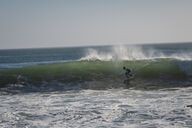
Surf in the Almadies district of Dakar, Senegal on Friday February 21, 2025.
Nicolas Réméné / Le Pictorium
LePictorium_0303396.jpg
Surfers at the 'Secret Spot' site in the Almadies district of Dakar, Senegal, Friday February 21, 2025.
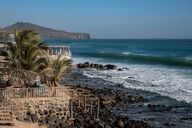
Surf in the Almadies district of Dakar, Senegal on Friday February 21, 2025.
Nicolas Réméné / Le Pictorium
LePictorium_0303397.jpg
Surfers at the 'Secret Spot' site in the Almadies district of Dakar, Senegal, Friday February 21, 2025.
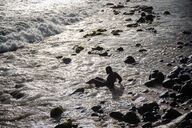
Surf in the Almadies district of Dakar, Senegal on Friday February 21, 2025.
Nicolas Réméné / Le Pictorium
LePictorium_0303398.jpg
Surfers at the 'Secret Spot' site in the Almadies district of Dakar, Senegal, Friday February 21, 2025.

Surf in the Almadies district of Dakar, Senegal on Friday February 21, 2025.
Nicolas Réméné / Le Pictorium
LePictorium_0303399.jpg
Surfers at the 'Secret Spot' site in the Almadies district of Dakar, Senegal, Friday February 21, 2025.

Surf in the Almadies district of Dakar, Senegal on Friday February 21, 2025.
Nicolas Réméné / Le Pictorium
LePictorium_0303400.jpg
Surfers at the 'Secret Spot' site in the Almadies district of Dakar, Senegal, Friday February 21, 2025.
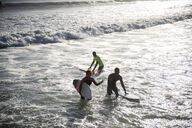
Surf in the Almadies district of Dakar, Senegal on Friday February 21, 2025.
Nicolas Réméné / Le Pictorium
LePictorium_0303401.jpg
Surfers at the 'Secret Spot' site in the Almadies district of Dakar, Senegal, Friday February 21, 2025.

Surf in the Almadies district of Dakar, Senegal on Friday February 21, 2025.
Nicolas Réméné / Le Pictorium
LePictorium_0303402.jpg
Surfers at the 'Secret Spot' site in the Almadies district of Dakar, Senegal, Friday February 21, 2025.
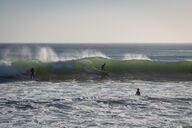
Surf in the Almadies district of Dakar, Senegal on Friday February 21, 2025.
Nicolas Réméné / Le Pictorium
LePictorium_0303403.jpg
Surfers at the 'Secret Spot' site in the Almadies district of Dakar, Senegal, Friday February 21, 2025.
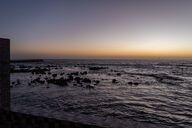
Surf in the Almadies district of Dakar, Senegal on Friday February 21, 2025.
Nicolas Réméné / Le Pictorium
LePictorium_0303404.jpg
Sunset on February 21, 2025 at Pointe des Almadies in Dakar, Senegal. Pointe des Almadies is the westernmost point of the African continent.
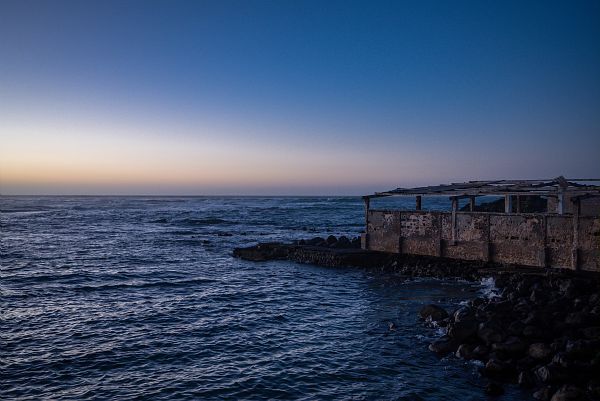
Surf in the Almadies district of Dakar, Senegal on Friday February 21, 2025.
Nicolas Réméné / Le Pictorium
LePictorium_0303405.jpg
Sunset on February 21, 2025 at Pointe des Almadies in Dakar, Senegal. Pointe des Almadies is the westernmost point of the African continent.
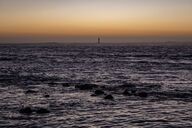
Surf in the Almadies district of Dakar, Senegal on Friday February 21, 2025.
Nicolas Réméné / Le Pictorium
LePictorium_0303406.jpg
Sunset on February 21, 2025 at Pointe des Almadies in Dakar, Senegal. Pointe des Almadies is the westernmost point of the African continent.
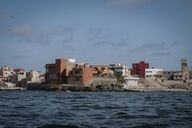
Construction and real estate in Dakar, Senegal
Nicolas Réméné / Le Pictorium
LePictorium_0292363.jpg
View of the coastline at the commune of Ngor and the corniche des Almadies in Dakar, Senegal, on Sunday June 2, 2024. At the end of April, the Direction de la surveillance et du contrôle de l'occupation du sol (Dscos), acting on instructions from the new authorities, decided to halt all construction work underway on the Dakar corniches and the Guédiawaye filaos strip, in order to take stock of building permits, their issuance, and possible illegal construction.
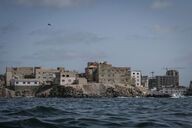
Construction and real estate in Dakar, Senegal
Nicolas Réméné / Le Pictorium
LePictorium_0292364.jpg
View of the coastline at the commune of Ngor and the corniche des Almadies in Dakar, Senegal, on Sunday June 2, 2024. At the end of April, the Direction de la surveillance et du contrôle de l'occupation du sol (Dscos), acting on instructions from the new authorities, decided to halt all construction work underway on the Dakar corniches and the Guédiawaye filaos strip, in order to take stock of building permits, their issuance, and possible illegal construction.
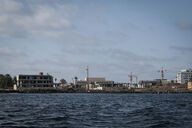
Construction and real estate in Dakar, Senegal
Nicolas Réméné / Le Pictorium
LePictorium_0292365.jpg
View of the coastline at the commune of Ngor and the corniche des Almadies in Dakar, Senegal, on Sunday June 2, 2024. At the end of April, the Direction de la surveillance et du contrôle de l'occupation du sol (Dscos), acting on instructions from the new authorities, decided to halt all construction work underway on the Dakar corniches and the Guédiawaye filaos strip, in order to take stock of building permits, their issuance, and possible illegal construction.
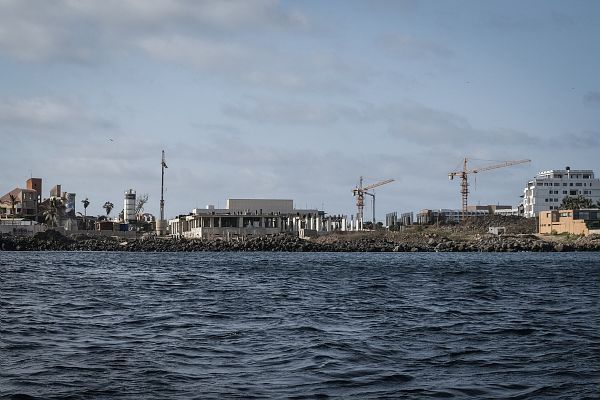
Construction and real estate in Dakar, Senegal
Nicolas Réméné / Le Pictorium
LePictorium_0292366.jpg
View of the coastline at the commune of Ngor and the corniche des Almadies in Dakar, Senegal, on Sunday June 2, 2024. At the end of April, the Direction de la surveillance et du contrôle de l'occupation du sol (Dscos), acting on instructions from the new authorities, decided to halt all construction work underway on the Dakar corniches and the Guédiawaye filaos strip, in order to take stock of building permits, their issuance, and possible illegal construction.
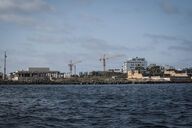
Construction and real estate in Dakar, Senegal
Nicolas Réméné / Le Pictorium
LePictorium_0292367.jpg
View of the coastline at the commune of Ngor and the corniche des Almadies in Dakar, Senegal, on Sunday June 2, 2024. At the end of April, the Direction de la surveillance et du contrôle de l'occupation du sol (Dscos), acting on instructions from the new authorities, decided to halt all construction work underway on the Dakar corniches and the Guédiawaye filaos strip, in order to take stock of building permits, their issuance, and possible illegal construction.
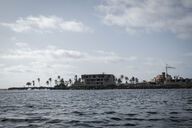
Construction and real estate in Dakar, Senegal
Nicolas Réméné / Le Pictorium
LePictorium_0292368.jpg
View of the coastline at the commune of Ngor and the corniche des Almadies in Dakar, Senegal, on Sunday June 2, 2024. At the end of April, the Direction de la surveillance et du contrôle de l'occupation du sol (Dscos), acting on instructions from the new authorities, decided to halt all construction work underway on the Dakar corniches and the Guédiawaye filaos strip, in order to take stock of building permits, their issuance, and possible illegal construction.
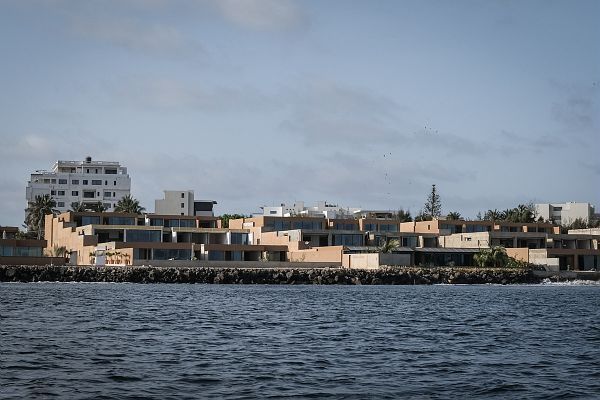
Construction and real estate in Dakar, Senegal
Nicolas Réméné / Le Pictorium
LePictorium_0292369.jpg
View of the coastline at the commune of Ngor and the corniche des Almadies in Dakar, Senegal, on Sunday June 2, 2024. At the end of April, the Direction de la surveillance et du contrôle de l'occupation du sol (Dscos), acting on instructions from the new authorities, decided to halt all construction work underway on the Dakar corniches and the Guédiawaye filaos strip, in order to take stock of building permits, their issuance, and possible illegal construction.

Construction and real estate in Dakar, Senegal
Nicolas Réméné / Le Pictorium
LePictorium_0292370.jpg
View of the coastline at the commune of Ngor and the corniche des Almadies in Dakar, Senegal, on Sunday June 2, 2024. At the end of April, the Direction de la surveillance et du contrôle de l'occupation du sol (Dscos), acting on instructions from the new authorities, decided to halt all construction work underway on the Dakar corniches and the Guédiawaye filaos strip, in order to take stock of building permits, their issuance, and possible illegal construction.
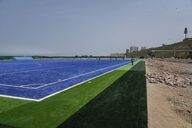
El Niño phenomenon on the north coast of Peru
Nicolas Réméné / Le Pictorium
LePictorium_0281286.jpg
Construction of the Alberto Junior Rodríguez Valdelomar sports ground in the San Miguel district of Lima, Peru, on 7 October 2018. Urban development work is trying to gain a little on the Peruvian capital's coastline. Lima, like many coastal towns and villages in the north has to deal regularly with the climatic hazards caused by the periodic alternation of the El Niño and La Niña phenomena. ---------------------------------------- The El Nino phenomenon on the north coast of Peru North of Lima in Peru, along almost 1300 km of coastline, many villages are periodically subjected to the climatic phenomena known as El Niño and La Niña. La Niña occurs more often, but is much less severe. As for El Niño, it recurs every 3 to 7 years. It is the result of disruptions to the oceanic and climatic system in the equatorial Pacific, particularly around the Peruvian and Ecuadorian coasts of South America. This phenomenon, which has a major influence on the world's climate, results in a surge of warm water in the Pacific Ocean and a rise in water levels that can lead to torrential rain, major flooding and landslides. These extreme weather events have had dramatic consequences for many of the villages along the coast. Many of these villages are fishing villages, where small-scale fishing is an essential part of the local economy, but El Niño has tended to warm surface waters, resulting in a reduction in plankton and therefore fish, turning the whole food chain upside down. In recent decades, the El Niño phenomenon has reappeared on several occasions, affecting ecosystems that are already particularly vulnerable to climate change, and causing a migratory flow of fish.
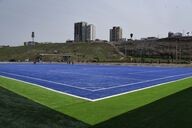
El Niño phenomenon on the north coast of Peru
Nicolas Réméné / Le Pictorium
LePictorium_0281287.jpg
Construction of the Alberto Junior Rodríguez Valdelomar sports ground in the San Miguel district of Lima, Peru, on 7 October 2018. Urban development work is trying to gain a little on the Peruvian capital's coastline. Lima, like many coastal towns and villages in the north has to deal regularly with the climatic hazards caused by the periodic alternation of the El Niño and La Niña phenomena. ---------------------------------------- The El Nino phenomenon on the north coast of Peru North of Lima in Peru, along almost 1300 km of coastline, many villages are periodically subjected to the climatic phenomena known as El Niño and La Niña. La Niña occurs more often, but is much less severe. As for El Niño, it recurs every 3 to 7 years. It is the result of disruptions to the oceanic and climatic system in the equatorial Pacific, particularly around the Peruvian and Ecuadorian coasts of South America. This phenomenon, which has a major influence on the world's climate, results in a surge of warm water in the Pacific Ocean and a rise in water levels that can lead to torrential rain, major flooding and landslides. These extreme weather events have had dramatic consequences for many of the villages along the coast. Many of these villages are fishing villages, where small-scale fishing is an essential part of the local economy, but El Niño has tended to warm surface waters, resulting in a reduction in plankton and therefore fish, turning the whole food chain upside down. In recent decades, the El Niño phenomenon has reappeared on several occasions, affecting ecosystems that are already particularly vulnerable to climate change, and causing a migratory flow of fish.
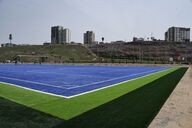
El Niño phenomenon on the north coast of Peru
Nicolas Réméné / Le Pictorium
LePictorium_0281288.jpg
Construction of the Alberto Junior Rodríguez Valdelomar sports ground in the San Miguel district of Lima, Peru, on 7 October 2018. Urban development work is trying to gain a little on the Peruvian capital's coastline. Lima, like many coastal towns and villages in the north has to deal regularly with the climatic hazards caused by the periodic alternation of the El Niño and La Niña phenomena. ---------------------------------------- The El Nino phenomenon on the north coast of Peru North of Lima in Peru, along almost 1300 km of coastline, many villages are periodically subjected to the climatic phenomena known as El Niño and La Niña. La Niña occurs more often, but is much less severe. As for El Niño, it recurs every 3 to 7 years. It is the result of disruptions to the oceanic and climatic system in the equatorial Pacific, particularly around the Peruvian and Ecuadorian coasts of South America. This phenomenon, which has a major influence on the world's climate, results in a surge of warm water in the Pacific Ocean and a rise in water levels that can lead to torrential rain, major flooding and landslides. These extreme weather events have had dramatic consequences for many of the villages along the coast. Many of these villages are fishing villages, where small-scale fishing is an essential part of the local economy, but El Niño has tended to warm surface waters, resulting in a reduction in plankton and therefore fish, turning the whole food chain upside down. In recent decades, the El Niño phenomenon has reappeared on several occasions, affecting ecosystems that are already particularly vulnerable to climate change, and causing a migratory flow of fish.
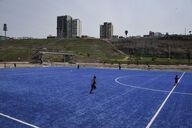
El Niño phenomenon on the north coast of Peru
Nicolas Réméné / Le Pictorium
LePictorium_0281289.jpg
Construction of the Alberto Junior Rodríguez Valdelomar sports ground in the San Miguel district of Lima, Peru, on 7 October 2018. Urban development work is trying to gain a little on the Peruvian capital's coastline. Lima, like many coastal towns and villages in the north has to deal regularly with the climatic hazards caused by the periodic alternation of the El Niño and La Niña phenomena. ---------------------------------------- The El Nino phenomenon on the north coast of Peru North of Lima in Peru, along almost 1300 km of coastline, many villages are periodically subjected to the climatic phenomena known as El Niño and La Niña. La Niña occurs more often, but is much less severe. As for El Niño, it recurs every 3 to 7 years. It is the result of disruptions to the oceanic and climatic system in the equatorial Pacific, particularly around the Peruvian and Ecuadorian coasts of South America. This phenomenon, which has a major influence on the world's climate, results in a surge of warm water in the Pacific Ocean and a rise in water levels that can lead to torrential rain, major flooding and landslides. These extreme weather events have had dramatic consequences for many of the villages along the coast. Many of these villages are fishing villages, where small-scale fishing is an essential part of the local economy, but El Niño has tended to warm surface waters, resulting in a reduction in plankton and therefore fish, turning the whole food chain upside down. In recent decades, the El Niño phenomenon has reappeared on several occasions, affecting ecosystems that are already particularly vulnerable to climate change, and causing a migratory flow of fish.
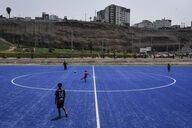
El Niño phenomenon on the north coast of Peru
Nicolas Réméné / Le Pictorium
LePictorium_0281290.jpg
Construction of the Alberto Junior Rodríguez Valdelomar sports ground in the San Miguel district of Lima, Peru, on 7 October 2018. Urban development work is trying to gain a little on the Peruvian capital's coastline. Lima, like many coastal towns and villages in the north has to deal regularly with the climatic hazards caused by the periodic alternation of the El Niño and La Niña phenomena. ---------------------------------------- The El Nino phenomenon on the north coast of Peru North of Lima in Peru, along almost 1300 km of coastline, many villages are periodically subjected to the climatic phenomena known as El Niño and La Niña. La Niña occurs more often, but is much less severe. As for El Niño, it recurs every 3 to 7 years. It is the result of disruptions to the oceanic and climatic system in the equatorial Pacific, particularly around the Peruvian and Ecuadorian coasts of South America. This phenomenon, which has a major influence on the world's climate, results in a surge of warm water in the Pacific Ocean and a rise in water levels that can lead to torrential rain, major flooding and landslides. These extreme weather events have had dramatic consequences for many of the villages along the coast. Many of these villages are fishing villages, where small-scale fishing is an essential part of the local economy, but El Niño has tended to warm surface waters, resulting in a reduction in plankton and therefore fish, turning the whole food chain upside down. In recent decades, the El Niño phenomenon has reappeared on several occasions, affecting ecosystems that are already particularly vulnerable to climate change, and causing a migratory flow of fish.
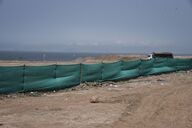
El Niño phenomenon on the north coast of Peru
Nicolas Réméné / Le Pictorium
LePictorium_0281291.jpg
Construction of the Alberto Junior Rodríguez Valdelomar sports ground in the San Miguel district of Lima, Peru, on 7 October 2018. Urban development work is trying to gain a little on the Peruvian capital's coastline. Lima, like many coastal towns and villages in the north has to deal regularly with the climatic hazards caused by the periodic alternation of the El Niño and La Niña phenomena. ---------------------------------------- The El Nino phenomenon on the north coast of Peru North of Lima in Peru, along almost 1300 km of coastline, many villages are periodically subjected to the climatic phenomena known as El Niño and La Niña. La Niña occurs more often, but is much less severe. As for El Niño, it recurs every 3 to 7 years. It is the result of disruptions to the oceanic and climatic system in the equatorial Pacific, particularly around the Peruvian and Ecuadorian coasts of South America. This phenomenon, which has a major influence on the world's climate, results in a surge of warm water in the Pacific Ocean and a rise in water levels that can lead to torrential rain, major flooding and landslides. These extreme weather events have had dramatic consequences for many of the villages along the coast. Many of these villages are fishing villages, where small-scale fishing is an essential part of the local economy, but El Niño has tended to warm surface waters, resulting in a reduction in plankton and therefore fish, turning the whole food chain upside down. In recent decades, the El Niño phenomenon has reappeared on several occasions, affecting ecosystems that are already particularly vulnerable to climate change, and causing a migratory flow of fish.

El Niño phenomenon on the north coast of Peru
Nicolas Réméné / Le Pictorium
LePictorium_0281292.jpg
Construction of the Alberto Junior Rodríguez Valdelomar sports ground in the San Miguel district of Lima, Peru, on 7 October 2018. Urban development work is trying to gain a little on the Peruvian capital's coastline. Lima, like many coastal towns and villages in the north has to deal regularly with the climatic hazards caused by the periodic alternation of the El Niño and La Niña phenomena. ---------------------------------------- The El Nino phenomenon on the north coast of Peru North of Lima in Peru, along almost 1300 km of coastline, many villages are periodically subjected to the climatic phenomena known as El Niño and La Niña. La Niña occurs more often, but is much less severe. As for El Niño, it recurs every 3 to 7 years. It is the result of disruptions to the oceanic and climatic system in the equatorial Pacific, particularly around the Peruvian and Ecuadorian coasts of South America. This phenomenon, which has a major influence on the world's climate, results in a surge of warm water in the Pacific Ocean and a rise in water levels that can lead to torrential rain, major flooding and landslides. These extreme weather events have had dramatic consequences for many of the villages along the coast. Many of these villages are fishing villages, where small-scale fishing is an essential part of the local economy, but El Niño has tended to warm surface waters, resulting in a reduction in plankton and therefore fish, turning the whole food chain upside down. In recent decades, the El Niño phenomenon has reappeared on several occasions, affecting ecosystems that are already particularly vulnerable to climate change, and causing a migratory flow of fish.
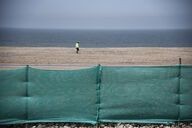
El Niño phenomenon on the north coast of Peru
Nicolas Réméné / Le Pictorium
LePictorium_0281293.jpg
Construction of the Alberto Junior Rodríguez Valdelomar sports ground in the San Miguel district of Lima, Peru, on 7 October 2018. Urban development work is trying to gain a little on the Peruvian capital's coastline. Lima, like many coastal towns and villages in the north has to deal regularly with the climatic hazards caused by the periodic alternation of the El Niño and La Niña phenomena. ---------------------------------------- The El Nino phenomenon on the north coast of Peru North of Lima in Peru, along almost 1300 km of coastline, many villages are periodically subjected to the climatic phenomena known as El Niño and La Niña. La Niña occurs more often, but is much less severe. As for El Niño, it recurs every 3 to 7 years. It is the result of disruptions to the oceanic and climatic system in the equatorial Pacific, particularly around the Peruvian and Ecuadorian coasts of South America. This phenomenon, which has a major influence on the world's climate, results in a surge of warm water in the Pacific Ocean and a rise in water levels that can lead to torrential rain, major flooding and landslides. These extreme weather events have had dramatic consequences for many of the villages along the coast. Many of these villages are fishing villages, where small-scale fishing is an essential part of the local economy, but El Niño has tended to warm surface waters, resulting in a reduction in plankton and therefore fish, turning the whole food chain upside down. In recent decades, the El Niño phenomenon has reappeared on several occasions, affecting ecosystems that are already particularly vulnerable to climate change, and causing a migratory flow of fish.
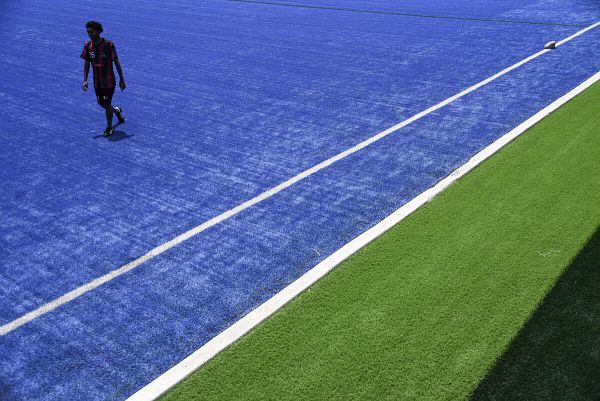
El Niño phenomenon on the north coast of Peru
Nicolas Réméné / Le Pictorium
LePictorium_0281294.jpg
Construction of the Alberto Junior Rodríguez Valdelomar sports ground in the San Miguel district of Lima, Peru, on 7 October 2018. Urban development work is trying to gain a little on the Peruvian capital's coastline. Lima, like many coastal towns and villages in the north has to deal regularly with the climatic hazards caused by the periodic alternation of the El Niño and La Niña phenomena. ---------------------------------------- The El Nino phenomenon on the north coast of Peru North of Lima in Peru, along almost 1300 km of coastline, many villages are periodically subjected to the climatic phenomena known as El Niño and La Niña. La Niña occurs more often, but is much less severe. As for El Niño, it recurs every 3 to 7 years. It is the result of disruptions to the oceanic and climatic system in the equatorial Pacific, particularly around the Peruvian and Ecuadorian coasts of South America. This phenomenon, which has a major influence on the world's climate, results in a surge of warm water in the Pacific Ocean and a rise in water levels that can lead to torrential rain, major flooding and landslides. These extreme weather events have had dramatic consequences for many of the villages along the coast. Many of these villages are fishing villages, where small-scale fishing is an essential part of the local economy, but El Niño has tended to warm surface waters, resulting in a reduction in plankton and therefore fish, turning the whole food chain upside down. In recent decades, the El Niño phenomenon has reappeared on several occasions, affecting ecosystems that are already particularly vulnerable to climate change, and causing a migratory flow of fish.
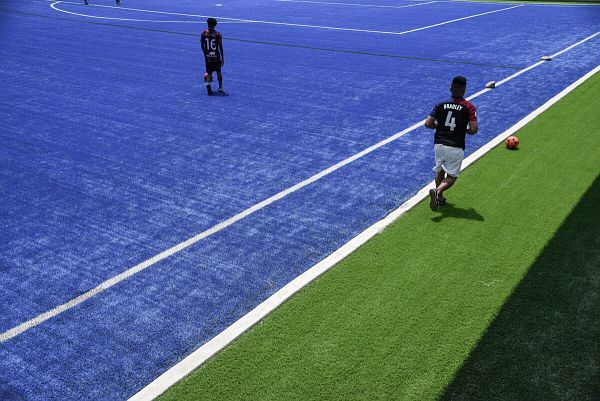
El Niño phenomenon on the north coast of Peru
Nicolas Réméné / Le Pictorium
LePictorium_0281295.jpg
Construction of the Alberto Junior Rodríguez Valdelomar sports ground in the San Miguel district of Lima, Peru, on 7 October 2018. Urban development work is trying to gain a little on the Peruvian capital's coastline. Lima, like many coastal towns and villages in the north has to deal regularly with the climatic hazards caused by the periodic alternation of the El Niño and La Niña phenomena. ---------------------------------------- The El Nino phenomenon on the north coast of Peru North of Lima in Peru, along almost 1300 km of coastline, many villages are periodically subjected to the climatic phenomena known as El Niño and La Niña. La Niña occurs more often, but is much less severe. As for El Niño, it recurs every 3 to 7 years. It is the result of disruptions to the oceanic and climatic system in the equatorial Pacific, particularly around the Peruvian and Ecuadorian coasts of South America. This phenomenon, which has a major influence on the world's climate, results in a surge of warm water in the Pacific Ocean and a rise in water levels that can lead to torrential rain, major flooding and landslides. These extreme weather events have had dramatic consequences for many of the villages along the coast. Many of these villages are fishing villages, where small-scale fishing is an essential part of the local economy, but El Niño has tended to warm surface waters, resulting in a reduction in plankton and therefore fish, turning the whole food chain upside down. In recent decades, the El Niño phenomenon has reappeared on several occasions, affecting ecosystems that are already particularly vulnerable to climate change, and causing a migratory flow of fish.
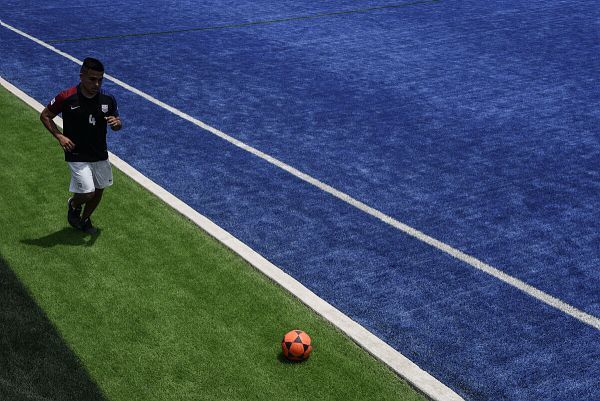
El Niño phenomenon on the north coast of Peru
Nicolas Réméné / Le Pictorium
LePictorium_0281296.jpg
Construction of the Alberto Junior Rodríguez Valdelomar sports ground in the San Miguel district of Lima, Peru, on 7 October 2018. Urban development work is trying to gain a little on the Peruvian capital's coastline. Lima, like many coastal towns and villages in the north has to deal regularly with the climatic hazards caused by the periodic alternation of the El Niño and La Niña phenomena. ---------------------------------------- The El Nino phenomenon on the north coast of Peru North of Lima in Peru, along almost 1300 km of coastline, many villages are periodically subjected to the climatic phenomena known as El Niño and La Niña. La Niña occurs more often, but is much less severe. As for El Niño, it recurs every 3 to 7 years. It is the result of disruptions to the oceanic and climatic system in the equatorial Pacific, particularly around the Peruvian and Ecuadorian coasts of South America. This phenomenon, which has a major influence on the world's climate, results in a surge of warm water in the Pacific Ocean and a rise in water levels that can lead to torrential rain, major flooding and landslides. These extreme weather events have had dramatic consequences for many of the villages along the coast. Many of these villages are fishing villages, where small-scale fishing is an essential part of the local economy, but El Niño has tended to warm surface waters, resulting in a reduction in plankton and therefore fish, turning the whole food chain upside down. In recent decades, the El Niño phenomenon has reappeared on several occasions, affecting ecosystems that are already particularly vulnerable to climate change, and causing a migratory flow of fish.
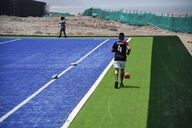
El Niño phenomenon on the north coast of Peru
Nicolas Réméné / Le Pictorium
LePictorium_0281297.jpg
Construction of the Alberto Junior Rodríguez Valdelomar sports ground in the San Miguel district of Lima, Peru, on 7 October 2018. Urban development work is trying to gain a little on the Peruvian capital's coastline. Lima, like many coastal towns and villages in the north has to deal regularly with the climatic hazards caused by the periodic alternation of the El Niño and La Niña phenomena. ---------------------------------------- The El Nino phenomenon on the north coast of Peru North of Lima in Peru, along almost 1300 km of coastline, many villages are periodically subjected to the climatic phenomena known as El Niño and La Niña. La Niña occurs more often, but is much less severe. As for El Niño, it recurs every 3 to 7 years. It is the result of disruptions to the oceanic and climatic system in the equatorial Pacific, particularly around the Peruvian and Ecuadorian coasts of South America. This phenomenon, which has a major influence on the world's climate, results in a surge of warm water in the Pacific Ocean and a rise in water levels that can lead to torrential rain, major flooding and landslides. These extreme weather events have had dramatic consequences for many of the villages along the coast. Many of these villages are fishing villages, where small-scale fishing is an essential part of the local economy, but El Niño has tended to warm surface waters, resulting in a reduction in plankton and therefore fish, turning the whole food chain upside down. In recent decades, the El Niño phenomenon has reappeared on several occasions, affecting ecosystems that are already particularly vulnerable to climate change, and causing a migratory flow of fish.
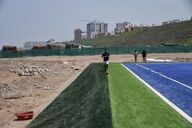
El Niño phenomenon on the north coast of Peru
Nicolas Réméné / Le Pictorium
LePictorium_0281298.jpg
Construction of the Alberto Junior Rodríguez Valdelomar sports ground in the San Miguel district of Lima, Peru, on 7 October 2018. Urban development work is trying to gain a little on the Peruvian capital's coastline. Lima, like many coastal towns and villages in the north has to deal regularly with the climatic hazards caused by the periodic alternation of the El Niño and La Niña phenomena. ---------------------------------------- The El Nino phenomenon on the north coast of Peru North of Lima in Peru, along almost 1300 km of coastline, many villages are periodically subjected to the climatic phenomena known as El Niño and La Niña. La Niña occurs more often, but is much less severe. As for El Niño, it recurs every 3 to 7 years. It is the result of disruptions to the oceanic and climatic system in the equatorial Pacific, particularly around the Peruvian and Ecuadorian coasts of South America. This phenomenon, which has a major influence on the world's climate, results in a surge of warm water in the Pacific Ocean and a rise in water levels that can lead to torrential rain, major flooding and landslides. These extreme weather events have had dramatic consequences for many of the villages along the coast. Many of these villages are fishing villages, where small-scale fishing is an essential part of the local economy, but El Niño has tended to warm surface waters, resulting in a reduction in plankton and therefore fish, turning the whole food chain upside down. In recent decades, the El Niño phenomenon has reappeared on several occasions, affecting ecosystems that are already particularly vulnerable to climate change, and causing a migratory flow of fish.
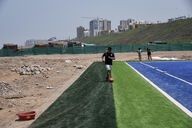
El Niño phenomenon on the north coast of Peru
Nicolas Réméné / Le Pictorium
LePictorium_0281299.jpg
Construction of the Alberto Junior Rodríguez Valdelomar sports ground in the San Miguel district of Lima, Peru, on 7 October 2018. Urban development work is trying to gain a little on the Peruvian capital's coastline. Lima, like many coastal towns and villages in the north has to deal regularly with the climatic hazards caused by the periodic alternation of the El Niño and La Niña phenomena. ---------------------------------------- The El Nino phenomenon on the north coast of Peru North of Lima in Peru, along almost 1300 km of coastline, many villages are periodically subjected to the climatic phenomena known as El Niño and La Niña. La Niña occurs more often, but is much less severe. As for El Niño, it recurs every 3 to 7 years. It is the result of disruptions to the oceanic and climatic system in the equatorial Pacific, particularly around the Peruvian and Ecuadorian coasts of South America. This phenomenon, which has a major influence on the world's climate, results in a surge of warm water in the Pacific Ocean and a rise in water levels that can lead to torrential rain, major flooding and landslides. These extreme weather events have had dramatic consequences for many of the villages along the coast. Many of these villages are fishing villages, where small-scale fishing is an essential part of the local economy, but El Niño has tended to warm surface waters, resulting in a reduction in plankton and therefore fish, turning the whole food chain upside down. In recent decades, the El Niño phenomenon has reappeared on several occasions, affecting ecosystems that are already particularly vulnerable to climate change, and causing a migratory flow of fish.
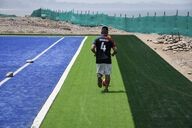
El Niño phenomenon on the north coast of Peru
Nicolas Réméné / Le Pictorium
LePictorium_0281300.jpg
Construction of the Alberto Junior Rodríguez Valdelomar sports ground in the San Miguel district of Lima, Peru, on 7 October 2018. Urban development work is trying to gain a little on the Peruvian capital's coastline. Lima, like many coastal towns and villages in the north has to deal regularly with the climatic hazards caused by the periodic alternation of the El Niño and La Niña phenomena. ---------------------------------------- The El Nino phenomenon on the north coast of Peru North of Lima in Peru, along almost 1300 km of coastline, many villages are periodically subjected to the climatic phenomena known as El Niño and La Niña. La Niña occurs more often, but is much less severe. As for El Niño, it recurs every 3 to 7 years. It is the result of disruptions to the oceanic and climatic system in the equatorial Pacific, particularly around the Peruvian and Ecuadorian coasts of South America. This phenomenon, which has a major influence on the world's climate, results in a surge of warm water in the Pacific Ocean and a rise in water levels that can lead to torrential rain, major flooding and landslides. These extreme weather events have had dramatic consequences for many of the villages along the coast. Many of these villages are fishing villages, where small-scale fishing is an essential part of the local economy, but El Niño has tended to warm surface waters, resulting in a reduction in plankton and therefore fish, turning the whole food chain upside down. In recent decades, the El Niño phenomenon has reappeared on several occasions, affecting ecosystems that are already particularly vulnerable to climate change, and causing a migratory flow of fish.
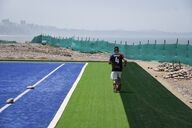
El Niño phenomenon on the north coast of Peru
Nicolas Réméné / Le Pictorium
LePictorium_0281301.jpg
Construction of the Alberto Junior Rodríguez Valdelomar sports ground in the San Miguel district of Lima, Peru, on 7 October 2018. Urban development work is trying to gain a little on the Peruvian capital's coastline. Lima, like many coastal towns and villages in the north has to deal regularly with the climatic hazards caused by the periodic alternation of the El Niño and La Niña phenomena. ---------------------------------------- The El Nino phenomenon on the north coast of Peru North of Lima in Peru, along almost 1300 km of coastline, many villages are periodically subjected to the climatic phenomena known as El Niño and La Niña. La Niña occurs more often, but is much less severe. As for El Niño, it recurs every 3 to 7 years. It is the result of disruptions to the oceanic and climatic system in the equatorial Pacific, particularly around the Peruvian and Ecuadorian coasts of South America. This phenomenon, which has a major influence on the world's climate, results in a surge of warm water in the Pacific Ocean and a rise in water levels that can lead to torrential rain, major flooding and landslides. These extreme weather events have had dramatic consequences for many of the villages along the coast. Many of these villages are fishing villages, where small-scale fishing is an essential part of the local economy, but El Niño has tended to warm surface waters, resulting in a reduction in plankton and therefore fish, turning the whole food chain upside down. In recent decades, the El Niño phenomenon has reappeared on several occasions, affecting ecosystems that are already particularly vulnerable to climate change, and causing a migratory flow of fish.
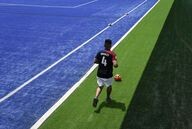
El Niño phenomenon on the north coast of Peru
Nicolas Réméné / Le Pictorium
LePictorium_0281302.jpg
Construction of the Alberto Junior Rodríguez Valdelomar sports ground in the San Miguel district of Lima, Peru, on 7 October 2018. Urban development work is trying to gain a little on the Peruvian capital's coastline. Lima, like many coastal towns and villages in the north has to deal regularly with the climatic hazards caused by the periodic alternation of the El Niño and La Niña phenomena. ---------------------------------------- The El Nino phenomenon on the north coast of Peru North of Lima in Peru, along almost 1300 km of coastline, many villages are periodically subjected to the climatic phenomena known as El Niño and La Niña. La Niña occurs more often, but is much less severe. As for El Niño, it recurs every 3 to 7 years. It is the result of disruptions to the oceanic and climatic system in the equatorial Pacific, particularly around the Peruvian and Ecuadorian coasts of South America. This phenomenon, which has a major influence on the world's climate, results in a surge of warm water in the Pacific Ocean and a rise in water levels that can lead to torrential rain, major flooding and landslides. These extreme weather events have had dramatic consequences for many of the villages along the coast. Many of these villages are fishing villages, where small-scale fishing is an essential part of the local economy, but El Niño has tended to warm surface waters, resulting in a reduction in plankton and therefore fish, turning the whole food chain upside down. In recent decades, the El Niño phenomenon has reappeared on several occasions, affecting ecosystems that are already particularly vulnerable to climate change, and causing a migratory flow of fish.

El Niño phenomenon on the north coast of Peru
Nicolas Réméné / Le Pictorium
LePictorium_0281303.jpg
Construction of the Alberto Junior Rodríguez Valdelomar sports ground in the San Miguel district of Lima, Peru, on 7 October 2018. Urban development work is trying to gain a little on the Peruvian capital's coastline. Lima, like many coastal towns and villages in the north has to deal regularly with the climatic hazards caused by the periodic alternation of the El Niño and La Niña phenomena. ---------------------------------------- The El Nino phenomenon on the north coast of Peru North of Lima in Peru, along almost 1300 km of coastline, many villages are periodically subjected to the climatic phenomena known as El Niño and La Niña. La Niña occurs more often, but is much less severe. As for El Niño, it recurs every 3 to 7 years. It is the result of disruptions to the oceanic and climatic system in the equatorial Pacific, particularly around the Peruvian and Ecuadorian coasts of South America. This phenomenon, which has a major influence on the world's climate, results in a surge of warm water in the Pacific Ocean and a rise in water levels that can lead to torrential rain, major flooding and landslides. These extreme weather events have had dramatic consequences for many of the villages along the coast. Many of these villages are fishing villages, where small-scale fishing is an essential part of the local economy, but El Niño has tended to warm surface waters, resulting in a reduction in plankton and therefore fish, turning the whole food chain upside down. In recent decades, the El Niño phenomenon has reappeared on several occasions, affecting ecosystems that are already particularly vulnerable to climate change, and causing a migratory flow of fish.
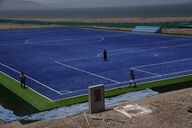
El Niño phenomenon on the north coast of Peru
Nicolas Réméné / Le Pictorium
LePictorium_0281304.jpg
Construction of the Alberto Junior Rodríguez Valdelomar sports ground in the San Miguel district of Lima, Peru, on 7 October 2018. Urban development work is trying to gain a little on the Peruvian capital's coastline. Lima, like many coastal towns and villages in the north has to deal regularly with the climatic hazards caused by the periodic alternation of the El Niño and La Niña phenomena. ---------------------------------------- The El Nino phenomenon on the north coast of Peru North of Lima in Peru, along almost 1300 km of coastline, many villages are periodically subjected to the climatic phenomena known as El Niño and La Niña. La Niña occurs more often, but is much less severe. As for El Niño, it recurs every 3 to 7 years. It is the result of disruptions to the oceanic and climatic system in the equatorial Pacific, particularly around the Peruvian and Ecuadorian coasts of South America. This phenomenon, which has a major influence on the world's climate, results in a surge of warm water in the Pacific Ocean and a rise in water levels that can lead to torrential rain, major flooding and landslides. These extreme weather events have had dramatic consequences for many of the villages along the coast. Many of these villages are fishing villages, where small-scale fishing is an essential part of the local economy, but El Niño has tended to warm surface waters, resulting in a reduction in plankton and therefore fish, turning the whole food chain upside down. In recent decades, the El Niño phenomenon has reappeared on several occasions, affecting ecosystems that are already particularly vulnerable to climate change, and causing a migratory flow of fish.
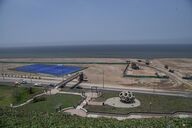
El Niño phenomenon on the north coast of Peru
Nicolas Réméné / Le Pictorium
LePictorium_0281305.jpg
Construction of the Alberto Junior Rodríguez Valdelomar sports ground in the San Miguel district of Lima, Peru, on 7 October 2018. Urban development work is trying to gain a little on the Peruvian capital's coastline. Lima, like many coastal towns and villages in the north has to deal regularly with the climatic hazards caused by the periodic alternation of the El Niño and La Niña phenomena. ---------------------------------------- The El Nino phenomenon on the north coast of Peru North of Lima in Peru, along almost 1300 km of coastline, many villages are periodically subjected to the climatic phenomena known as El Niño and La Niña. La Niña occurs more often, but is much less severe. As for El Niño, it recurs every 3 to 7 years. It is the result of disruptions to the oceanic and climatic system in the equatorial Pacific, particularly around the Peruvian and Ecuadorian coasts of South America. This phenomenon, which has a major influence on the world's climate, results in a surge of warm water in the Pacific Ocean and a rise in water levels that can lead to torrential rain, major flooding and landslides. These extreme weather events have had dramatic consequences for many of the villages along the coast. Many of these villages are fishing villages, where small-scale fishing is an essential part of the local economy, but El Niño has tended to warm surface waters, resulting in a reduction in plankton and therefore fish, turning the whole food chain upside down. In recent decades, the El Niño phenomenon has reappeared on several occasions, affecting ecosystems that are already particularly vulnerable to climate change, and causing a migratory flow of fish.
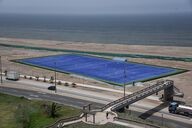
El Niño phenomenon on the north coast of Peru
Nicolas Réméné / Le Pictorium
LePictorium_0281306.jpg
Construction of the Alberto Junior Rodríguez Valdelomar sports ground in the San Miguel district of Lima, Peru, on 7 October 2018. Urban development work is trying to gain a little on the Peruvian capital's coastline. Lima, like many coastal towns and villages in the north has to deal regularly with the climatic hazards caused by the periodic alternation of the El Niño and La Niña phenomena. ---------------------------------------- The El Nino phenomenon on the north coast of Peru North of Lima in Peru, along almost 1300 km of coastline, many villages are periodically subjected to the climatic phenomena known as El Niño and La Niña. La Niña occurs more often, but is much less severe. As for El Niño, it recurs every 3 to 7 years. It is the result of disruptions to the oceanic and climatic system in the equatorial Pacific, particularly around the Peruvian and Ecuadorian coasts of South America. This phenomenon, which has a major influence on the world's climate, results in a surge of warm water in the Pacific Ocean and a rise in water levels that can lead to torrential rain, major flooding and landslides. These extreme weather events have had dramatic consequences for many of the villages along the coast. Many of these villages are fishing villages, where small-scale fishing is an essential part of the local economy, but El Niño has tended to warm surface waters, resulting in a reduction in plankton and therefore fish, turning the whole food chain upside down. In recent decades, the El Niño phenomenon has reappeared on several occasions, affecting ecosystems that are already particularly vulnerable to climate change, and causing a migratory flow of fish.
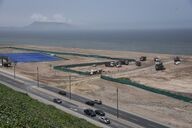
El Niño phenomenon on the north coast of Peru
Nicolas Réméné / Le Pictorium
LePictorium_0281307.jpg
Construction of the Alberto Junior Rodríguez Valdelomar sports ground in the San Miguel district of Lima, Peru, on 7 October 2018. Urban development work is trying to gain a little on the Peruvian capital's coastline. Lima, like many coastal towns and villages in the north has to deal regularly with the climatic hazards caused by the periodic alternation of the El Niño and La Niña phenomena. ---------------------------------------- The El Nino phenomenon on the north coast of Peru North of Lima in Peru, along almost 1300 km of coastline, many villages are periodically subjected to the climatic phenomena known as El Niño and La Niña. La Niña occurs more often, but is much less severe. As for El Niño, it recurs every 3 to 7 years. It is the result of disruptions to the oceanic and climatic system in the equatorial Pacific, particularly around the Peruvian and Ecuadorian coasts of South America. This phenomenon, which has a major influence on the world's climate, results in a surge of warm water in the Pacific Ocean and a rise in water levels that can lead to torrential rain, major flooding and landslides. These extreme weather events have had dramatic consequences for many of the villages along the coast. Many of these villages are fishing villages, where small-scale fishing is an essential part of the local economy, but El Niño has tended to warm surface waters, resulting in a reduction in plankton and therefore fish, turning the whole food chain upside down. In recent decades, the El Niño phenomenon has reappeared on several occasions, affecting ecosystems that are already particularly vulnerable to climate change, and causing a migratory flow of fish.
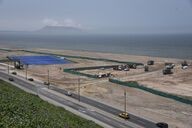
El Niño phenomenon on the north coast of Peru
Nicolas Réméné / Le Pictorium
LePictorium_0281308.jpg
Construction of the Alberto Junior Rodríguez Valdelomar sports ground in the San Miguel district of Lima, Peru, on 7 October 2018. Urban development work is trying to gain a little on the Peruvian capital's coastline. Lima, like many coastal towns and villages in the north has to deal regularly with the climatic hazards caused by the periodic alternation of the El Niño and La Niña phenomena. ---------------------------------------- The El Nino phenomenon on the north coast of Peru North of Lima in Peru, along almost 1300 km of coastline, many villages are periodically subjected to the climatic phenomena known as El Niño and La Niña. La Niña occurs more often, but is much less severe. As for El Niño, it recurs every 3 to 7 years. It is the result of disruptions to the oceanic and climatic system in the equatorial Pacific, particularly around the Peruvian and Ecuadorian coasts of South America. This phenomenon, which has a major influence on the world's climate, results in a surge of warm water in the Pacific Ocean and a rise in water levels that can lead to torrential rain, major flooding and landslides. These extreme weather events have had dramatic consequences for many of the villages along the coast. Many of these villages are fishing villages, where small-scale fishing is an essential part of the local economy, but El Niño has tended to warm surface waters, resulting in a reduction in plankton and therefore fish, turning the whole food chain upside down. In recent decades, the El Niño phenomenon has reappeared on several occasions, affecting ecosystems that are already particularly vulnerable to climate change, and causing a migratory flow of fish.
Next page
